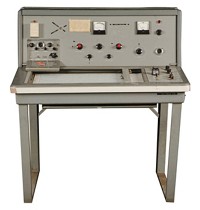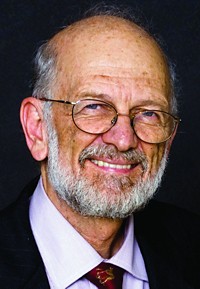Advertisement
Grab your lab coat. Let's get started
Welcome!
Welcome!
Create an account below to get 6 C&EN articles per month, receive newsletters and more - all free.
It seems this is your first time logging in online. Please enter the following information to continue.
As an ACS member you automatically get access to this site. All we need is few more details to create your reading experience.
Not you? Sign in with a different account.
Not you? Sign in with a different account.
ERROR 1
ERROR 1
ERROR 2
ERROR 2
ERROR 2
ERROR 2
ERROR 2
Password and Confirm password must match.
If you have an ACS member number, please enter it here so we can link this account to your membership. (optional)
ERROR 2
ACS values your privacy. By submitting your information, you are gaining access to C&EN and subscribing to our weekly newsletter. We use the information you provide to make your reading experience better, and we will never sell your data to third party members.
Analytical Chemistry
From Heyrovsky to Glucose Sensing
Waters Symposium honors 80-year history of electroanalytical instrumentation
by STU BORMAN, C&EN WASHINGTON
March 28, 2005
| A version of this story appeared in
Volume 83, Issue 13

COVER STORY
FROM HEYROVSKY TO GLUCOSE SENSING
Electroanalytical chemistry, the use of oxidation-reduction reactions and other charge-transfer phenomena to analyze samples, traces its origins back at least eight decades. It's one of the fundamental subdisciplines of analytical chemistry. At the 16th James L. Waters Symposium at Pittcon 2005, a group of eminent electrochemists recounted the story of how instrumentation for the field has developed.
It all started with Czech scientist Jaroslav Heyrovsky, according to chemistry professor Allen J. Bard of the University of Texas, Austin. In the 1920s, Heyrovsky discovered voltammetry, a form of electrochemistry in which samples are analyzed by measuring current through them as a function of the electrical potential applied to them. In 1922, Heyrovsky obtained the first voltammograms and saw waves characteristic of specific electroactive ions.
He and his coworkers developed a form of voltammetry called polarography, in which a dropping mercury electrode immersed in a sample is used to measure voltammetric currents, and they built the first polarograph in 1924. "To my knowledge, this was actually the first automatic recording instrument," Bard said. A Czech company introduced the first commercial version of Heyrovsky's polarograph around 1929.
A visit to the U.S. by Heyrovsky in 1933 helped spread interest in electroanalytical chemistry among a group of chemists now considered pioneers in the field, such as the late chemistry professor I. M. Kolthoff of the University of Minnesota. A quarter-century later, Heyrovsky received the 1959 Nobel Prize in Chemistry for discovering and developing polarographic analytical methods.
When World War II cut off access to Czech polarographs, companies such as Sargent, Fisher Scientific, and Leeds & Northrup began producing U.S. versions. Those instruments represented the state of the art in voltammetry until commercial operational amplifiers were introduced in the late 1950s. "Op amps are very high-gain differential amplifiers with broad frequency stability," said Jud B. Flato of J. B. Flato & Associates, Lafayette, Calif. "The performance characteristics of these devices allowed much more complex waveforms to be generated and allowed true potentiostatic control of electrochemical cells."
Op amp-based electroanalytical instruments that exploited these advantages were soon developed. A breakthrough instrument of this type was the versatile Model 170 Electrochemistry System developed by Flato and coworkers at Princeton Applied Research (PAR). "It was very laborious to put this thing together, to say the least," Flato said. Many seemingly insurmountable obstacles had to be overcome, and the development effort entailed a string of coincidences, serendipitous circumstances, and accidental successes. A handmade Model 170 was introduced at Pittcon in 1968, "and much of it didn't work," he said.
The completed and marketed instrument turned out to be quite successful. "We had no idea what we were doing, but we got it done," Flato said. "The instrument was not cheap for the time, but it did a lot." In fact, it seemed to be a work of genius compared to what had preceded it. As chemistry professor Peter T. Kissinger of Purdue University described it, the Model 170 "was the first truly solid-state modern electrochemical workstation. It was the equivalent of the first minicomputer: It changed everything."
A subsequent version, the PAR Model 174A, was less expensive than the Model 170 and even more successful. According to Flato, the PAR family of instruments "reinvigorated electrochemical research and brought modern polarography to the routine analytical laboratory." PAR, now a unit of Ametek, still produces and markets electrochemical instruments.
Kissinger bought a Model 174A, but he soon started designing his own op amp-based electrochemical instruments in his garage. In 1974, he founded a company, Bioanalytical Systems (BAS), to manufacture and market them. BAS introduced an amperometric (current-measuring) detector for liquid chromatography (LC) in 1974 and a basic cyclic-voltammetry instrument in 1975. The company's first instrument, the amperometric LC detector, is currently in its eighth generation, and the company has been quite successful.
AMAZINGLY, Kissinger had actually built his first electrochemical instrument, a polarograph, about 15 years earlier in his parents' basement, after hearing a lecture on polarography by the late electrochemist Louis Meites at Polytechnic Institute of Brooklyn. Hence, Kissinger has now been producing electroanalytical instruments for nearly half a century.
In 1986, Bard and coworkers took electrochemistry literally to a new dimension when they developed the first scanning electrochemical microscope (SECM), an instrument that performs electrochemistry at nanometer resolution. According to Bard, a 1972 National Bureau of Standards instrument called the Topografiner and the scanning tunneling microscope (STM) invented in the early 1980s by Gerd Binnig and Heinrich Rohrer of IBM Research Laboratory, in Zurich, "led the way first to STM studies in solution and then to the SECM."
Bard's SECM was commercialized by CH Instruments, and the current commercial version is the firm's CHI900B SECM. Applications of SECMs include studies at nanometer resolution of electrode surfaces, corrosion, biological samples, liquid-liquid interfaces, membranes, and arrays.
THE FUTURE, and indeed the present, of electroanalytical chemistry seems to center to a large degree on biological applications. Perhaps the classic bioelectrochemical device is the Clark electrode. This polarographic sensor for detecting oxygen in blood was developed by biochemist Leland C. Clark (see page 36). Yellow Springs Instrument Co. (YSI), cofounded by Hardy Trolander, constructed the first commercial version.
In the late '50s, Clark added glucose oxidase to the Clark electrode to make it sensitive to glucose, which was very difficult to measure at that time. YSI also developed a commercial glucose analyzer based on this discovery and still markets such biosensors today. Clark is still active and recently received the National Academy of Engineering's $500,000 Fritz J. & Dolores H. Russ Prize for his biosensor research.
Kissinger noted that electrochemical home glucose-testing devices today represent "over 95% of the world market for electrochemical instruments--the better part of $3 billion annually." Among these devices is the microcoulometric glucose monitor commercialized by TheraSense, a company cofounded by chemical engineering professor Adam Heller of UT Austin and his son Ephraim. Last year, TheraSense was purchased by Abbott Laboratories for $1.2 billion and was merged into Abbott Diabetes Care.
At the symposium, Wayne R. Matson noted that he cofounded Environmental Sciences Associates, now ESA, to develop and commercialize an electrochemical sensor for detecting lead in blood. An anodic stripping voltammetry-based lead analyzer "we built around 1970 is still running at ESA," he said.
Around that time, Matson and his colleagues began using the analyzers to test lead levels in children's blood. "At the height of the program, in Cincinnati in 1973, we tested 4,200 children and sent about 240 of them for immediate medical attention" because of high concentrations of lead in their blood. Nerve and brain development can be adversely affected in children exposed to lead.
Partly as a result of these studies, lead contamination "was recognized as an endemic problem in cities and in the U.S. population as a whole, and the [Centers for Disease Control & Prevention] lowered acceptable limits," Matson said. "Your kids now can't go to kindergarten without getting a lead test."
The future of preventive diagnostic testing "is going to be in point-of-care instruments put in the hands of people to make them responsible for their own health monitoring," Matson predicted. "This is going to come about primarily through the fields of nanotechnology and electrochemistry," he continued. "The future is in the hands of the gentle scientists of electrochemistry."




Join the conversation
Contact the reporter
Submit a Letter to the Editor for publication
Engage with us on Twitter